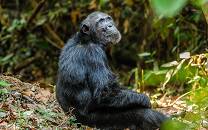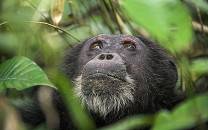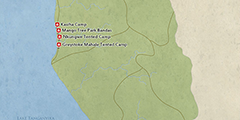Chimpanzees are the star attraction of Mahale Mountains National Park. The forests of this mountainous park are home to 900 chimps, and trekkers can visit the habituated Mimikere community, which includes about 75 individuals and has been studied by Japanese researchers since the 1960s. Mahale is also notable for its remote location on scenic Lake Tanganyika, the world’s longest contained freshwater body.

-
Best Time To Go
- August to October (Chimp trekking is easiest)
-
High Season
- August to October (Mahale is never crowded)
-
Size
- 1,613km² / 623mi²
-
Altitude
-
767-2,388m /2,516-7,835ft
 View Photos
View Photos
 View Photos
+24
Photos
View Photos
+24
Photos
 Open Map
Open Map
Pros & Cons
- A chance to come face-to-face with chimps
- The park is much bigger than Gombe National Park
- Pristine forest on the sandy shore of Lake Tanganyika
- Watching wildlife on a hike is a nice change from vehicle safaris
- Very exclusive and doesn't get crowded
- Difficult to get to and accommodation options are limited
- The remote location means that tour packages tend to be relatively expensive
Wildlife
Mahale’s chimps are the main attraction, but the park supports a diverse forest fauna, including readily observed troops of Ugandan red colobus, red-tailed, vervet and , a wide variety of butterflies and many forest and waterbirds. Bushpigs are often heard rooting around the camps at night and can sometimes be seen by flashlight.
More about Mahale's wildlifeScenery
The park incorporates a chain of wild, jungle-draped peaks towering to almost 2km/1mi above the shore of the azure water of Lake Tanganyika. The geography of this classic lake, with its steep and white, sandy beaches, is best appreciated on a cruise in a traditional
Activities
The main and most popular activity is . This usually starts after breakfast but may leave later, even after lunch, depending on the chimps’ movements and location. Other activities include guided forest walks to look for monkeys and birds, a hike to a beautiful waterfall in the rainforest, and cruises and snorkeling on the lake.
Weather & Climate
There are two clear-cut seasons in Mahale: the Dry (May to October) and the Wet (November to April). The former brings plenty of sunshine and blue skies, while in the latter, the humidity skyrockets along with the rainfall.
More about the weather and climateBest Time To Visit
Tracking chimpanzees is easiest from August to October, toward the tail end of the Dry season. This is when the animals favor the lower slopes close to the lakeshore, which is where all the accommodation is situated, and the forest tracks are firm underfoot. In the wetter months, the chimps forage on the higher slopes and they are harder to find. That said, brimming waterfalls and an explosion of butterflies make exploration at this time worthwhile.
More about the best time to visit



